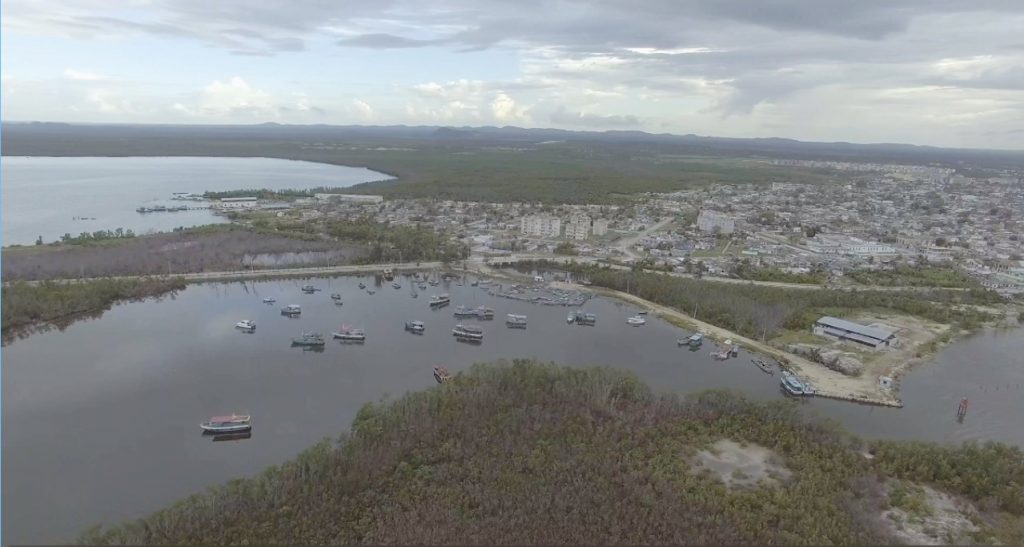The Cuba we left behind when we finished shooting Cuba: Living Between Hurricanes in July came under renewed pressure from the North in September. Fresh sanctions by Washington on oil shipments from Venezuela plunged Cuba into a fuel crisis. There wasn’t enough petrol in the pumps. Friends in Havana told us that people were instructed to stay home if they live too far to walk in to work. There has been huge pressure on public transport. Priority was given to hospitals and food distribution. Now, as we finish editing, we are due for a short return trip to Cuba to screen a preview for our collaborators and obtain their feedback. It looks like getting around Havana will be even more difficult than usual, and whether we’ll be able to make it to the province, some five hours drive, is open to doubt, although other reports say things should improve during October.
Cuba: Living Between Hurricanes is a film is about the elements – hurricanes and rain, the sea and the earth. About a fishing port on the north coast of Cuba which has seen better days: Caibarién, where Hurricane Irma – one of the most powerful ever to sweep the Caribbean – made landfall on 17th September 2017.
About the effects of climate across the centuries in a Caribbean island which was absorbed into global markets for its commodity crops – tobacco, coffee and above all, sugar. How sugar changed the landscape, through deforestation and soil exhaustion. About the collapse of sugar and the encroachment of a new market – tourism. About the growing threat from climate change, and moves towards reforestation, eco-tourism and sustainable farming.
Working with the Fundación Antonio Núñez Jiménez, a Cuban NGO dedicated to environmentalism, gave us the opportunity to get away from the iconic imagery of a Caribbean paradise which Communism has caught in an anachronistic time warp – the very imagery associated with the mass tourism whose growth since the 1990s has gone some way to replacing the foreign earnings lost when the sugar industry collapsed after the fall of the Soviet bloc. Our camera offers an alternative unvarnished perspective, as we film the streets of the town and surrounding countryside, and visit one of the new hotels on the nearby keys. The story is told with the help of newsreels from the Cuban film archives and aerial photography kindly provided by one of Cuba’s independent filmmakers.
We found our title in a speech by Cuba’s President, Miguel Díaz-Canel, to the meeting of Caribbean countries in Managua in 2019: “Living between hurricanes has conditioned our lives; it has modified our geographies and spurred our migrations. And it has also educated us in the need to further study the phenomena that await us and work to reverse their damage.” The film takes a step in this direction. Taking our lead from recent work by historians and alive to the growing threat of climate change, Caibarién, once a thriving entrepôt, offered a promising vantage point to test the historians’ thesis about the advance of commodity frontiers in response to the development of the world market. One of us already knew the locality, where forests and food self-sufficiency had given way to cattle ranching, tobacco cultivation, and increasingly during the nineteenth century, the sugarcane industry, with its railways and sugar mills, resulting in soil exhaustion and pollution. Initial research for the film threw up a variety of footage of Irma’s landfall on YouTube, and we were sure there would be more. But this would only be our starting point. Our aim was to look for the historical big picture, and the relation of hurricanes to other facets of climate and ecology in a region made more vulnerable by climate change.
What we also discovered is that ecological thinking in Cuba goes back to the 1960s, when reforestation began; that the country has also been developing alternatives in the form of eco-tourism; that environmental consciousness has grown since Fidel Castro’s forceful speech to the Earth Summit in Río de Janeiro in 1992; and the economic crisis of the 1990s has also encouraged new models of sustainable farming. Solutions like this are not just important locally. The challenge of climate change is global.

